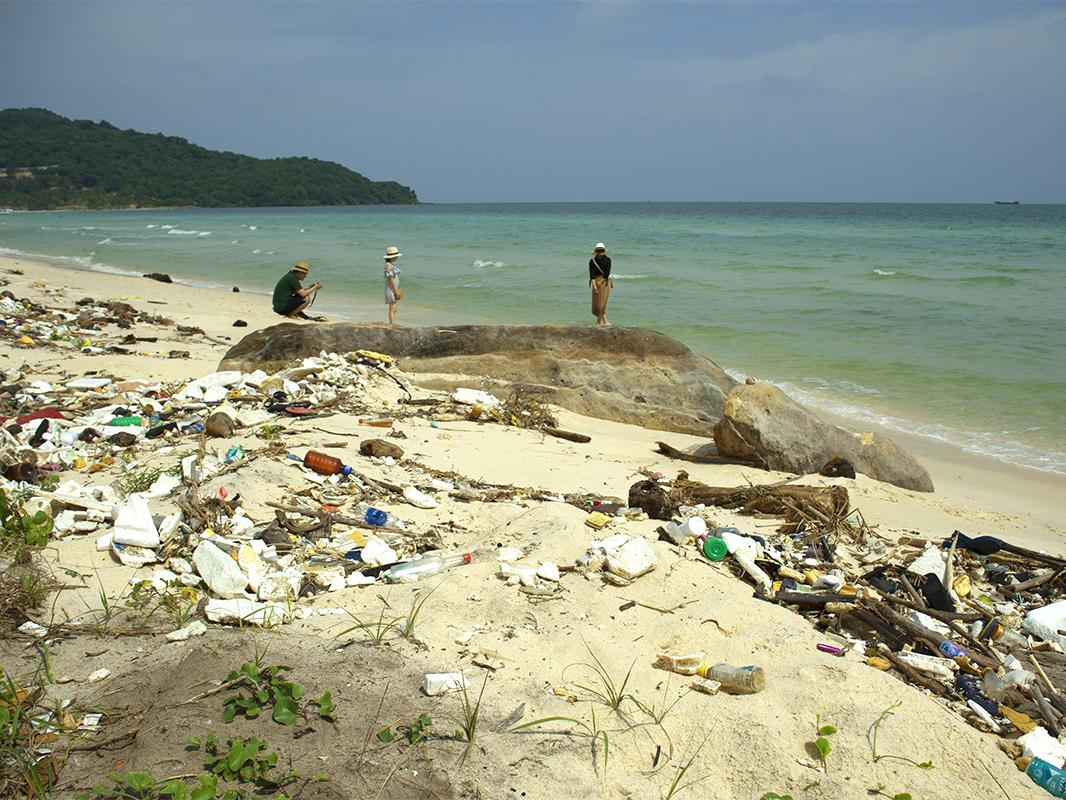Of all the garbage in the oceans, plastics are the most common. Besides wood, glass, metals, rubber and textiles, plastic accounts for 75 percent of all waste. Due to their durability, plastic products remain a problem on coasts and “at sea” for decades. For example, sea animals and seabirds can get tangled up in plastic or swallow plastic parts. And the problems don’t stop there: plastics also cause environmental and health problems in coastal areas and ultimately considerable costs, as for instance sewers clogged with plastic or littered beaches have to be cleaned.
Heide Kerber and Johanna Kramm from the PlastX research group under the direction of the ISOE – Institute for Social-Ecological Research are addressing this issue in their article “The garbage in our seas: Causes, Consequences, Solutions” where they discuss the possibilities and limitations of local and global solutions. Using Vietnam, one of the Southeast Asian “hotspots” of plastic waste entry, as an example, the authors show why the problem of waste cannot be solved quite so easily despite national solution strategies and local efforts. A widespread lack of environmental awareness and an inadequate waste infrastructure are decisive factors. “In the long term, what is needed is not only an effective infrastructure, but also new, less one-way oriented consumption practices,” they summarize the challenges ahead for the Southeast Asian region as well as worldwide. After all, plastic waste mainly ends up in the sea via land. These so-called land-based sources include leisure activities in coastal areas, but even garbage carelessly discarded at a greater distance can find its way to the beaches and into the sea via wind or rivers.
So far, barely more than declarations of intent: Global solution strategies
In view of these problems, work has been stepped up for some years now on measures to reduce the input of plastics from land-based sources into seas and oceans. However, in order to develop global, holistic solution strategies, it will be necessary to bring a large number of actors together, each with their own perception of the problem and competing views and intentions. These are: Political actors, the plastics producing and processing industries, non-governmental environmental organizations, civil society organizations, international development organizations and the scientific community. Even though there are already far-reaching global cooperation platforms as well as agreements, framework guidelines, and non-binding agreements there is still a long way to go from the solution strategies that have been developed to a global legally binding “plastics convention”.
Currently, first binding agreements remain fragmentary because they are based on a patchwork of parallel regulatory meetings causing many of the groups of actors involved in the problem to regard the legal framework as confusing. At the same time, there is often a lack of monitoring and enforcement mechanisms to sanction violations of existing regulations.
There is a lack of differentiated sanction and enforcement mechanisms
As the two ISOE researchers point out, it is difficult to effectively reduce marine litter since it comes from a variety of sources. It is almost impossible to put a figure on the entry sources and quantities of plastic waste. Moreover, plastic waste can be transported over long distances and accumulates in international waters. “This often means that the underlying connection between cause and effect is missing, which also makes it difficult to assign responsibilities in a differentiated way”.
In addition to legal regulations and financial incentives it is therefore important to create stronger global incentives to minimize the production and consumption of plastic disposables worldwide and to strengthen environmental awareness. Furthermore, companies should take responsibility for the proper disposal and recycling of their short-lived consumer goods. And last but not least, differentiated sanction and enforcement mechanisms are needed to ensure that regulations and multi-stakeholder agreements are more than just declarations of intent.
Der Müll in unseren Meeren. Ursachen, Folgen, Lösungen.
Heide Kerber, Johanna Kramm (2020). Geographische Rundschau (7/8), 16-20
www.isoe-publikationen.de
Scientific contact:
Heide Kerber
Tel. +49 69 707 6919-54
kerber(at)isoe.de
www.isoe.de
Media contact:
Dr. Nicola Schuldt-Baumgart
Tel. +49 69 707 6919-30
schuldt-baumgart(at)isoe.de
www.isoe.de
